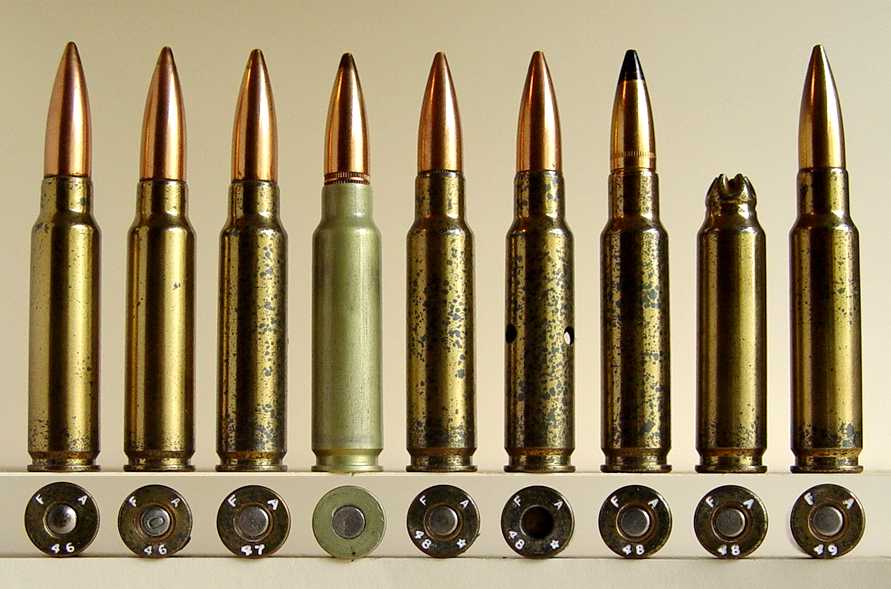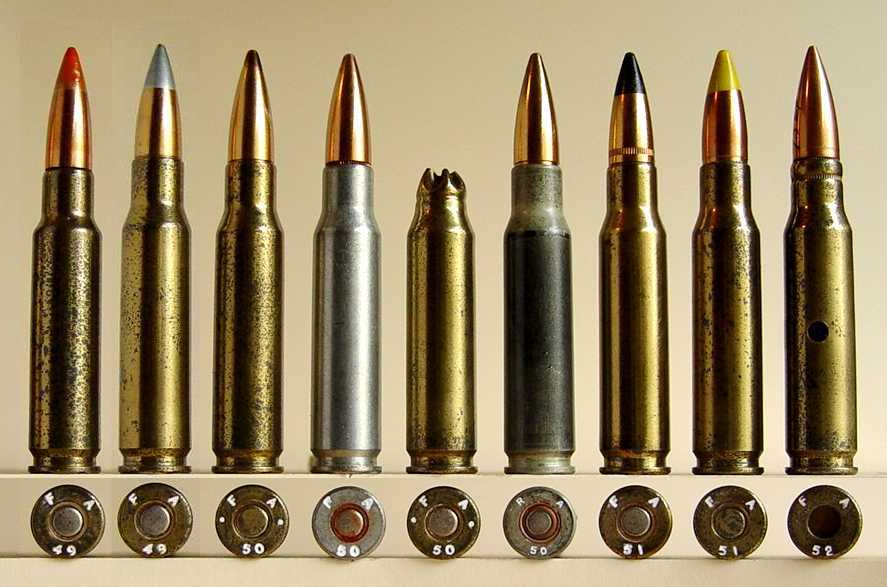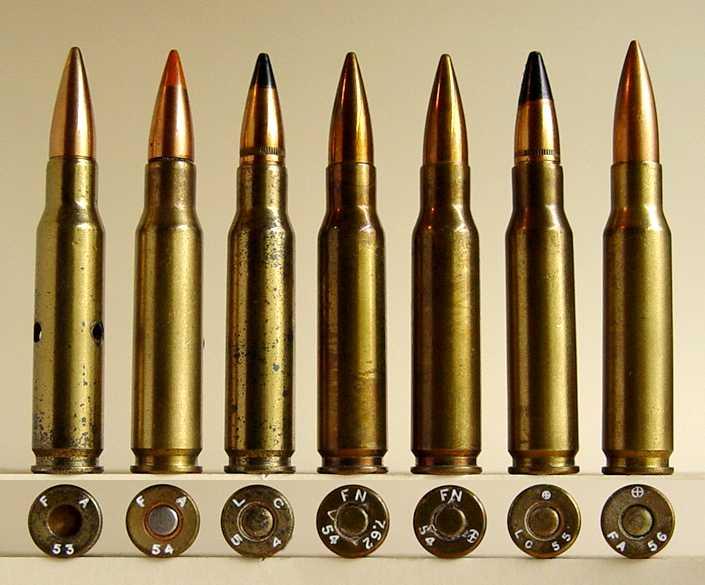|
THE CARTRIDGE COLLECTOR'S EXCHANGE |
| Contents
Cartridge
Lists
Prior Picture Pages:
Links to Other Sites
Cartridge Collectors Organizations:
Auctions:
Books:
Other Collector's Sites:
|
Home of the Old Ammo Guy's Virtual
Cartridge Trading Table Featuring a wide range of antique, obsolete, and modern ammunition for collectors Picture Page April 2005 What a box, and its full too!!
This is a great Union Metallic Cartridge Company box of .41 long rimfire
cartridges. The square corners, the dogs head logos, reference to Smith &
Wesson's 1860 patent, and designation of the caliber as 41-100 on the
label indicate that it is an early box, certainly dating before the
mid-1880s, when UMC made the shift to round cornered boxes and the 'U' in a
circle trademark replaced the dogs head logo. The cartridges in the box,
with their raised 'U' headstamps, pin its production date down a little more
precisely to between 1877 and 1878, the
two years that UMC employed this headstamp. Prior to this, their rimfire cartridges were . . . .
An assortment of US Cal .30 Light Rifle (Pre-7.62 NATO) cartridges..... Development of the 7.62 x 51mm cartridge was begun in 1944 and continued
for ten years until its adoption as the standard rifle cartridge by NATO in
1954. Although developed in the US, it did not become the standard
here until the M14 rifle was selected to replace the M1 Garand in May of
1957. The cartridge went through at least six case configurations in
the developmental process, beginning with .300 Savage cases loaded with the
M2 bullet used in the .30-06 Springfield cartridge. The pictures below
include examples of case designs that followed the .300 Savage. .
.. . The first of these was designated in January 1945 as the T65 case, which differed from the .300 Savage primarily in that its head diameter was increased to match that of the .30-06 Springfield, and the taper of the body was reduced to make it more straight sided, thereby increasing the powder capacity. The first four cartridges (two F A 46 ball, F A 47 ball, and unheadstamped ball) in the picture above use the T65 case, which measures just over 47mm (~1.867") in length. The first two Frankford Arsenal examples differ only in the primers used, the second one having a large '0'. I have several cartridges in my collection with this primer, most of them being sporting cartridges, leading me to conclude that this 7.62 is a reload. Does anyone know who made this primer? The fourth (unheadstamped) cartridge was produced by Remington Arms or the Frankford Arsenal, and has an aluminum or titanium case. In early 1947, the FAT1 case was developed, which had a longer neck (to allow the bullet to be held more firmly) and a wider extractor groove (to accommodate a redesigned extractor) than the T65. Case length, as a result of the longer neck, was slightly under 50mm (~1.945"). These changes are apparent when comparing the fifth and sixth cartridges (F A 48 * ball load and dummy ) in the picture with the first three. The star in the headstamp was intended to allow easy identification of the redesigned case. The fourth cartridge with the aluminum case has the wide extractor groove, which makes me think it was produced during the transition from the T65 to the FAT1 case. In 1948, the case was redesigned with a thicker rim to eliminate the likelihood of the extractors tearing through the case rims upon extraction. The wider rim resulted in a slight narrowing of the extractor groove. The resulting case was designated the FAT1E1, and is represented by the last three cartridges in the first picture (F A 48 AP and grenade blank, and F A 49 ball) and the first cartridge (F A 49 tracer) in the second picture below. .
. . The next proposed changes were intended to make production of the cases easier, and included increasing the taper of the case walls and reducing the shoulder angle from 60 degrees to 35. The resulting new case design shows up in an October 1948 Frankford drawing designated as the FAT2E2, but it is believed that none were ever produced, as no examples have been found. The final case, designated the FAT1E3 in mid-1949, and was the design that was adopted for the cartridge. This case had a slightly increased body taper over that of the FAT1E1, a reduced shoulder angle to 40 degrees, and an increased the case length to the familiar 51mm (~2.010"). The remaining cartridges in the pictures use the FAT1E3 case. In the second picture, these include a silver tipped armor piercing incendiary (F A 49), ball (F A . 50 .), tinned case proof (F A 50), grenade blank (F A . 50 .), Remington produced aluminum alloy case with a separate steel primer pocket (R A 50), black tip armor piercing (F A 51), yellow tip spotter (F A 51), and a ball dummy with a knurled cannelure on the neck (F A 52).
. This last picture includes a ball dummy (F A 53), orange tip tracer (F A 54), black tip knurled bullet armor piercing by Lake City ammunition plant (L C 54), and ball by the Belgian firm Fabrique National (FN 7.62 54), all made prior to NATO adoption of the cartridge. The last three cartridges were produced following NATO adoption, as indicated by the circular NATO symbol in the headstamps, and include a ball by Fabrique National (FN 54), black tip knurled bullet armor piercing (LC 55), and a ball (FA 56). I depended almost exclusively on an article by F.W. Scranton (U.S. Cal..30 Light Rifle Case Types (Pre-7.62mm NATO)) that appeared on pages 6 thru 10 of the IAA Journal, Issue 430, March & April 2003, for the information pertaining to the different 7.62 cases that I've included above. .
|

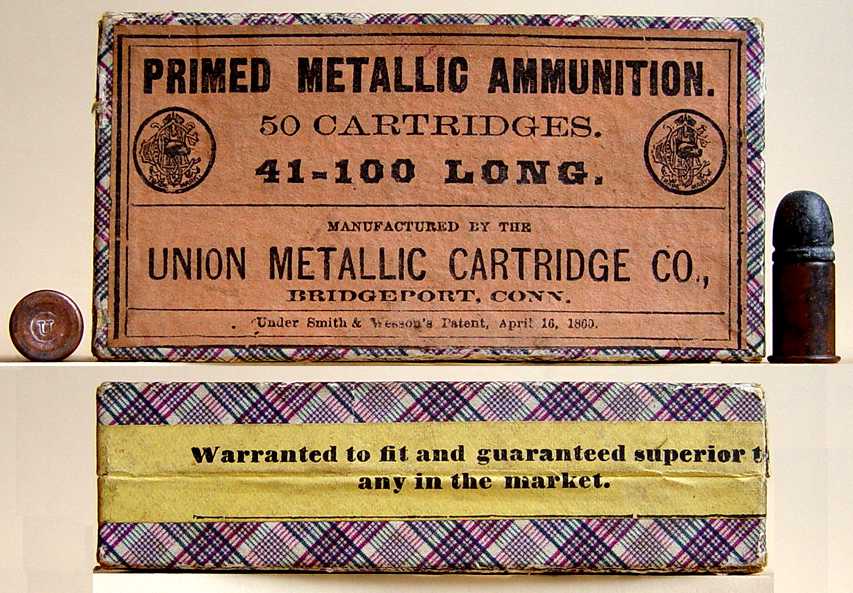
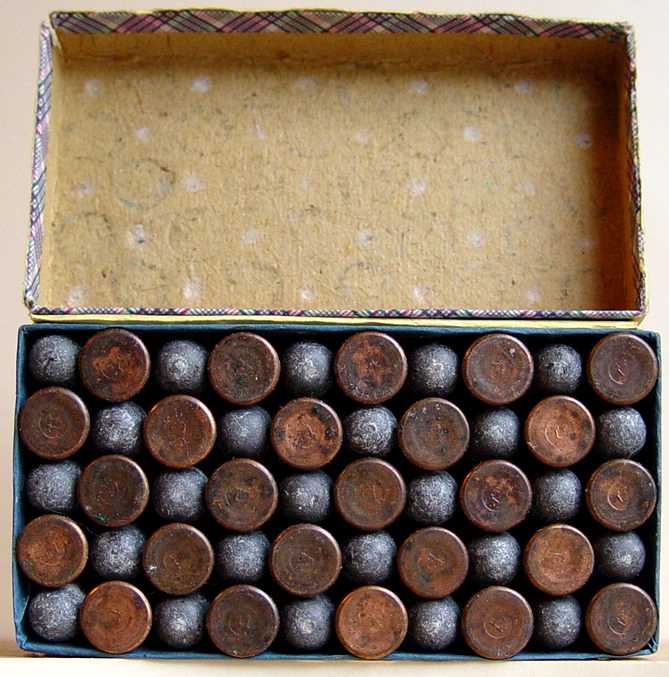 unheadstamped; after 1878 they went about seven more years without a headstamp
before the impressed 'U' that we are all so familiar with came into use in
1885, and continued to be used by UMC and and their successor Remington-UMC
for the next hundred years or so. Because they were in production for such a
short time, the raised U headstamps are fairly uncommon; my first glance
into this full box was undeniably the most I'd ever seen at one time.
unheadstamped; after 1878 they went about seven more years without a headstamp
before the impressed 'U' that we are all so familiar with came into use in
1885, and continued to be used by UMC and and their successor Remington-UMC
for the next hundred years or so. Because they were in production for such a
short time, the raised U headstamps are fairly uncommon; my first glance
into this full box was undeniably the most I'd ever seen at one time. 